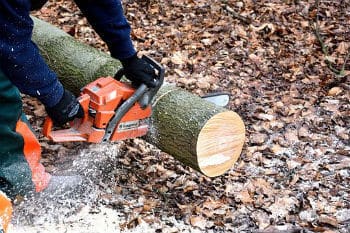5 Different Types of Chainsaws, Including Pictures & Videos
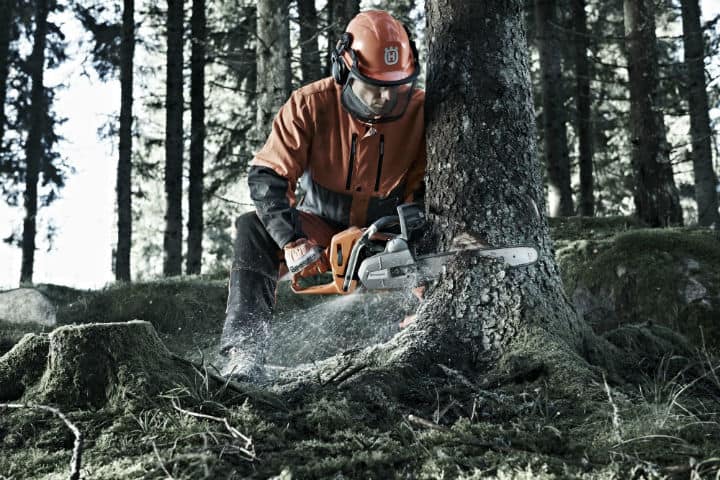
Is it just us, or do there seem to be hundreds of different chainsaws on the market? Okay, that’s overstating the case a little, but if you’ve been in the market for a chainsaw recently, you’ll understand what we mean.
Fortunately, there are just five main types of chainsaws. Every one of the brands online will fall into one of the following categories: pole saws, gas-powered, electric, battery-powered, or manual. Understanding what type you need is the first step in narrowing down your options.
List of 5 Different Types of Chainsaws
In this post, we’re going to go throughthese five categories and advise you on when you should use each.
1. Manual/Pocket Chainsaws

Manual chainsaws are an excellent option ifyou don’t have time for the gym. They’re not the most time-efficient option,but they also don’t use gas or power. Essentially, you have what looks similarto a bicycle chain with handles.
Before you scoff and look for a real powertool, hear us out. We wouldn’t want to try to cut a redwood down with thesesaws, but they’re still pretty useful.
Why?
- They’re portable: We’re not altogether sure why you’d need to carry a chainsaw around with you in case, but if you do, a manual might be the way to go. If you’re out camping, pop one into your backpack to cut firewood. You can’t do that with any of the other versions.
- They’re a greener option: If you want to reduce your carbon footprint, this is the best option. There’s no need to worry about gas emissions here. That is if you’re relatively fit – if not, you could be gasping for air quickly.
- They are always ready to go: Just wrap the chain around the material you’re cutting and get started. There’s no priming a motor or pulling a starter cord a million times.
- They’re Cost-effective: If you’re on a limited budget, you can make one of these at home. As it doesn’t require anything but the effort on your part, they’re very cost-effective to “run.”
- They’re quiet: No motor means that your huffing and puffing will be the loudest sound you produce.
2. Battery-Powered Chainsaws
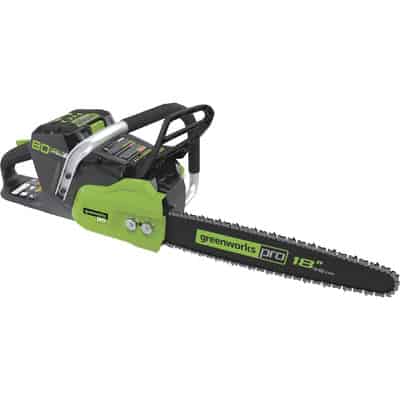
As the name suggests, Battery-powered chainsaws run on batteries. Now, there are advantages and disadvantages.
- Noneed for a power outlet: You might consider getting a battery-powered option ifyou’re working in a remote area without easy access to electricity. Without acord to worry about, you’ve got more maneuverability.
- Slightlylighter: You’re saving yourselfthe weight of a reservoir of gas. The battery makes these a little heavier thanelectric options but lighter than gas-powered models.
- Greatfor small projects: If you wantto finish a small project quickly, these are great. They’re easy to start and operate.
- Rechargeable: You won’t ever have to run to the gas stationor keep a supply of gas athome.
The amount of power these models produce isa bit of a downer, though. No battery-charged tool will ever match the power ofone running directly off electricity.
The other downside of battery-powered chainsaws is that they’ve got limited battery life. Chopping through hardwood, for example, will run the battery down faster. You can opt to get a spare battery as a backup, but that does mean extra weight to lug around with you, and added expense.
It can also be frustrating to get halfwaythrough your project, only to run out of charge. It’s not quite as urgent anemergency as your cell phone running low on power, but it’s annoying.
3. Corded-Electric Chainsaws
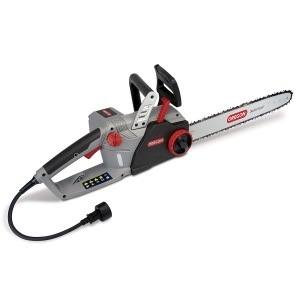
Now we’re moving into real power toolterritory. A corded model will run rings around its manual or battery-poweredcounterpart.
Why choose a corded model?
- They’requieter: Gas-powered models canmake an ear-shattering ruckus. Again, this might be overstating the case, butelectric models are a lot quieter.
- They’relightweight: They’re thelightest of all the models except the manual ones. If you prefer to do theleast amount of work, try an electric model.
- They’repretty powerful: Only agas-powered option offers the same brute strength. You’ll appreciate this ifyou have to chop down a large tree.
- Unlimitedoperation time: Technically,you’ll have to watch that the motor doesn’t overheat. That said, as long as youhave power, you can keep on going. There’s no gas to refill or batteries torecharge.
So, you’re probably wondering.
“If electric chainsaws are so great, whyare there alternative options?”
There are two reasons:
- Thecord gets in the way: The cordrestricts you here. You can only go as far as the cord and a suitable extensioncord will reach. Also, it’s a lot easier to cut the cord accidentally than youmight think. Don’t ask how we know that.
- Youneed power: A chainsaw is anexcellent tool to clear the debris from a hurricane. That is, as long as thepower company has the electricity up and running again. During a power out ofany type, your electric model is useless unless you are plugged into a gas generator.
4. Gas Powered Chainsaws
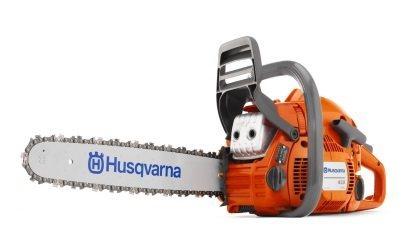
Professionals and homeowners are ones who use Gas Powered chainsaws more often. If you want the maximum blend of portability and power, you might consider getting a Gas-powered chainsaw. Gas power is great if:
- Youdon’t have a fixed power supply:If you’re in the back of beyond with hardly any hint of civilization in sight,these are an excellent option. As long as there’s gas in the tank, they’ll keeprunning.
- Youwant the most potent option:Nothing beats these beasts for sheer power.
- Veryportable: There are no cords toget tangled up in here. You can use these on the go.
Okay, so when is a gas-powered model a badidea? Unfortunately, there are some serious negatives here.
The worst is probably the noise that thesemodels produce. Forget the quiet and clean country air – just about the wholecounty will know what you’re doing.
Proper maintenance is vital. You’ll need toservice these models regularly to keep them in optimal working order. Thatmeans messy oil changes and careful cleaning.
They’re the heaviest of all the modelsavailable. The extra weight from the full gas tank makes them cumbersome. Youdon’t have to be Paul Bunyan to operate these saws, but fatigue is going to setin faster when you wield a gas-powered chainsaw.
5. Pole Chainsaws
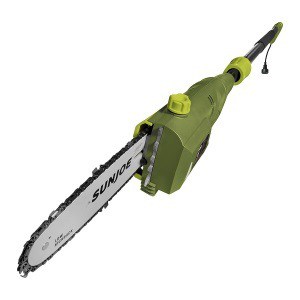
These are basically the little engines that could. The pole saws are not considered as chainsaws at all. But, with that said, they work in the same way. The primary difference is that they have a much longer handle.
They run on electricity, gas, or batteries.They’re useful for cutting the taller branches of trees and shrubs. Aside fromthat, their usefulness is limited.
Why?
- They’reloud: Even the electric modelsare a little noisy. The vibrations from the saw seem to be intensified by themovement of the handle. This increases the noise factor.
- They’renot as easy to control: You’reessentially taking a power tool and attaching it to the end of a stick. Thevibrations as a result of this make it a lot harder to control.
- They’llnever be as powerful as handheld versions: In this case, that’s probably a good thing, though. Youhave a lot more control over a handheld version. Pole saws don’t have the samedegree of power for safety reasons.
Conclusion
That concludes our basic explanation of thedifferent types of chainsaws. As you’ll notice, each has distinct advantagesand disadvantages. The manual models are the most eco-friendly and cost-effectiveof the lot, but require a lot of effort on your part.
The gas-powered models are the mostpowerful, but also the worst in terms of noise pollution. Battery-poweredmodels don’t measure up as well in terms of power but offer great portability overshort periods.
Electric models offer the best option forprolonged use. Finding a power outlet, however, can be problematic.
Is there one perfect chainsaw? Not really,but that can also be a good thing. If we found the perfect model, how would wejustify upgrading to a more powerful option later?
More Chainsaw posts:
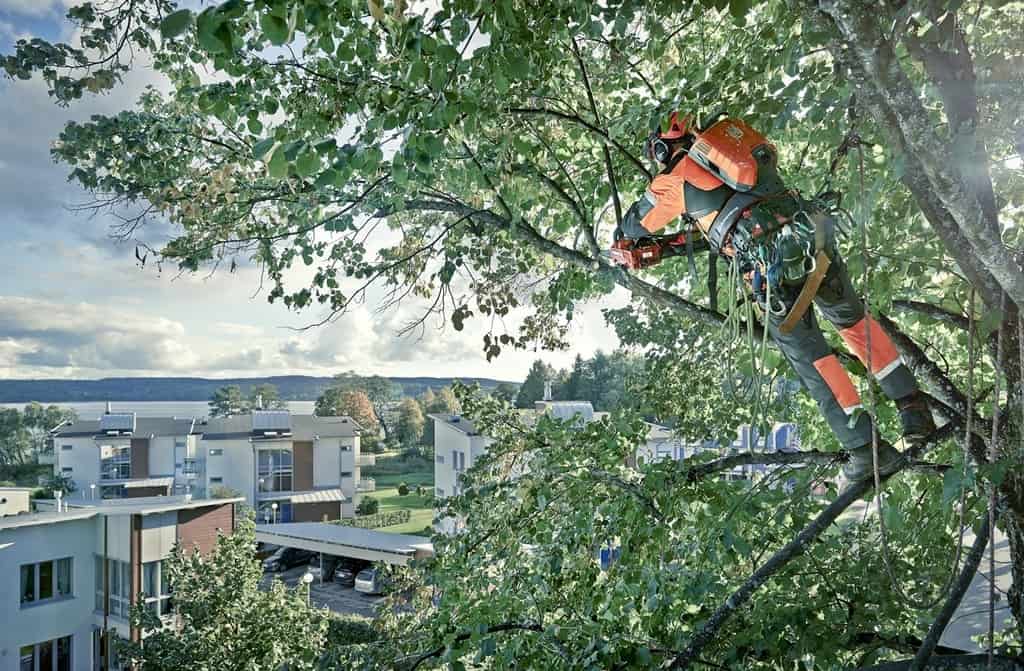
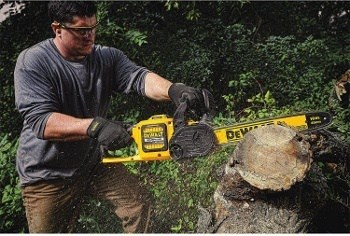
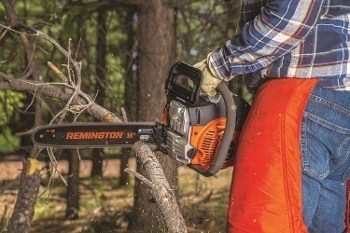
About the Author David Vieria
David has been a woodworker for most of his life — in his dad’s cabinet shop. After using the tools himself, he decided to share it his woodworking and power tools knowledge with DIYers. Read more about him

